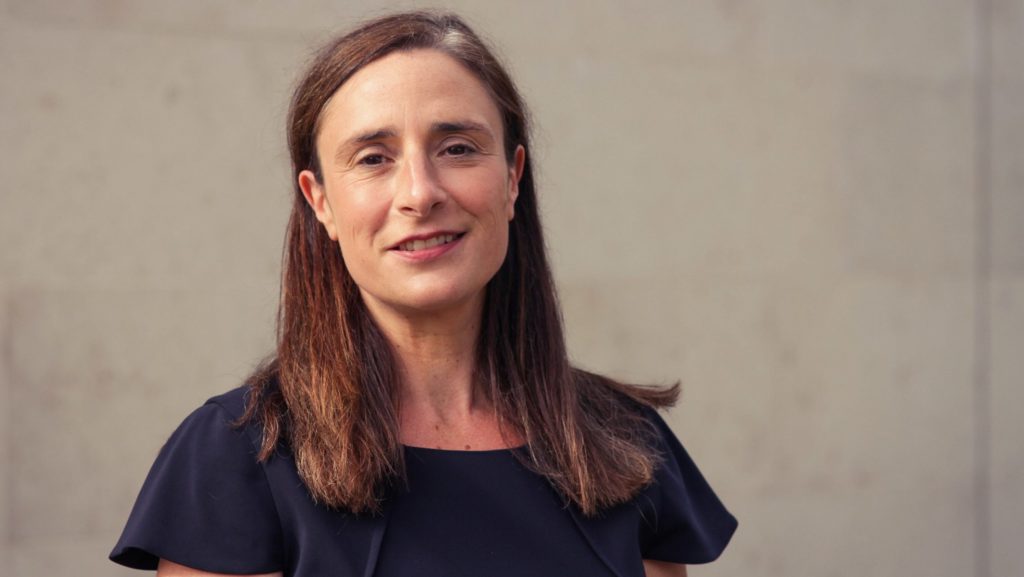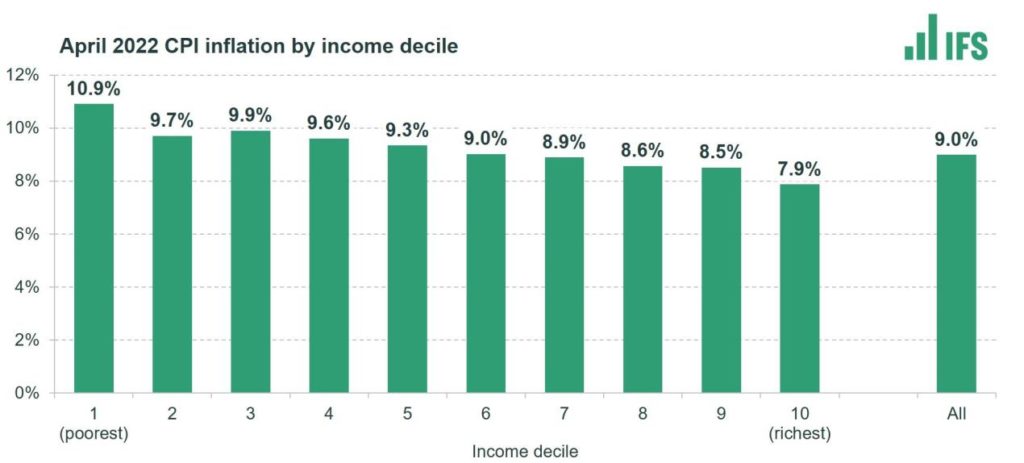This is how much more you’ll pay for everyday stuff
OBR predicts the biggest fall in living standards in a generation
Consumer inflation levels are reaching new highs, which means essential household items and so much more will spike in price. Personal finance experts show us how much more.
- CPI inflation surged again to 9% in April – up from 7% in March. It’s the highest CPI has been in 40 years.
- Earnings falling below inflation
- Prices for certain products and services will spike: which ones?
- Will savings rates go up, down or not change?
- Why is inflation even higher for those on the lowest pay?
- Is now a good time to switch savings account providers?
The Consumer Price Index, a market indicator that tracks the cost of everyday consumer goods like food, electricity and petrol, has had some bad news to report. April saw a huge hike in the energy price cap, which has pushed inflation to a 40-year high of 9%.
But what is making our finances even tighter is the rise in food, fuel and home improvement costs, all those things the CPI Index tracks, according to the latest figures from the Office for National Statistics.

“The surge in energy prices is draining us dry after gas prices almost doubled in a year,” says Sarah Coles, senior personal finance analyst, Hargreaves Lansdown.
Figures showed that excluding bonuses, wages fell even further behind inflation, with public sector workers suffering particularly – as prices stretched way ahead of paltry pay rises. And things are set to get even worse because the Office for Budget Responsibility OBR predicts the biggest fall in living standards in a generation.
What makes things even worse, is that we know that this is just the first blow, and we’re set for a follow-up in October that could send us reeling.
Sarah Coles, senior personal finance analyst, Hargreaves Lansdown.
“The invasion of Ukraine sent oil and gas prices sky high, which will feed through into yet more pain later this year, when the cap is expected to rise anything between 30% and 50%.”
The rising oil price continues to cause enormous pain at the pumps. A year earlier the average petrol price was 125.5p, but in April it hit a record of 161.8p. It means filling up a 55-litre car in April cost £19.97 more than a year earlier. It’s no wonder that government figures show 40% of people are cutting back on non-essential journeys in order to save money.
Food and non-alcoholic drink prices were rising faster again – up 6.7% in a year (5.9% in the year to March). There have been some really worrying rises in the prices of some staples including pasta (10.4%), milk (16.1%) and margarine (22.7%).
The same ONS survey showed that 14% of people are most concerned about the price of food, and 2 in 5 (41%) are taking the worrying step of buying less of it. The proportion of people buying less is growing – up from 39% in the previous period and 18% at the beginning of the year.
Prices in hotels and restaurants were also up 7.9%. This is due partly to the fact that VAT returned to its usual rate of 20%.
Employers have been wrestling with higher costs of everything from ingredients to heating, lighting and staff costs, so they haven’t been able to absorb the rise, and have passed it straight on to customers.
Anyone planning repairs and maintenance, or redecoration and refurbishment, will face “horrible price rises on all sides”.
Higher demand from people wanting to spend lockdown savings, coupled with supply chain problems across the world, has pushed the cost of materials for maintenance and repair up 16.8%. Meanwhile, furniture prices have rocketed by 16.5% for household furniture and 32.8% for garden furniture.
Now that international travel has become so much easier, we’re clamouring for a getaway. A combination of booming demand and reduced flight schedules means the price of flights is up 12.5% in a year.
And for those staying closer to home in cheaper accommodation, there’s even worse news, because that cheap and cheerful UK break in a campsite or holiday centre is going to cost you 22.9% more this year.
Just how much are UK consumer prices going up?
- Gas 95.5%
- Electricity 53.5%
- Garden furniture 32.8%
- Fuels and lubricants 31.4%
- Second-hand cars 27%
- Home contents insurance 23.5%
- Holiday centres and campsites 22.9%
- Margarine and vegetable fats 22.7%
- Materials for maintenance and repair 16.8%
- Household furniture 16.5%
- Low-fat milk 16.1%
- Articles for babies 15.9%
Why is inflation higher for those on lower pay?
Until this point, IFS work has shown that households across all income groups have faced similar rates of inflation. However, as the poorest households spend more of their total budget on gas and electricity, we now see inflation hitting the poorest households harder.
In April, the bottom 10% of the population in terms of income faced a rate of inflation rate of 10.9%, which was 3 percentage points higher than the inflation rate of the richest 10%. Most of this difference comes from the fact that the poorest households spend 11% of their total household budget on gas and electricity, compared to 4% for the richest households.

“Continuing pressures, such as the war in Ukraine, are likely to push Ofgem’s October tariff cap, as well as other prices including food prices, even higher later this year,” says Heidi Karjalainen, a Research Economist at the IFS.
“We are likely to be in a prolonged period during which poorer households are facing rates of inflation even higher than the headline figures would suggest,” says Karjalainen.
What does CPI inflation at 9% mean for savers?
There’s good news and bad news, says Coles.
She continues: “Savers will be very familiar with the bad news, as savings rates drop further behind soaring inflation, so every penny in savings accounts is losing money once inflation is taken into account.
“However, the good news is that savings rates are starting to rise. According to Moneyfacts, the average easy access deal now pays 0.39%, and the average one-year fixed rate pays 1.24%. Both are around three times higher than a year ago.”
Coles suggests you don’t need to “settle for average” because there has been an awful lot of movement among the most competitive rates, which are starting to rise in the wake of interest rate increases.
“You can now get 1.31% on an easy access account from Al Rayan Bank, with no strings attached, and a one-year fix from the same bank at 2.27%,” she says.
Admittedly these rates are still behind inflation, Coles admits who says the real value in savings is the protection they offer you, especially when we’re entering a fairly uncertain time for the economy.
Ideally anyone of working age should be working towards 3-6 months’ worth of essential expenses in an easy access savings account for emergencies. Then for any money you need for planned expenses in the next five years, it’s worth considering fixing for the most appropriate periods.
Sarah Coles, senior personal finance analyst, Hargreaves Lansdown
If you have savings in the bank, Coles says, “now is the time to move”.
“The high street giants have passed on an insultingly small fraction of the rate rise to savers, so there’s no point holding on just in case they suddenly decide to do the decent thing,” she says.


